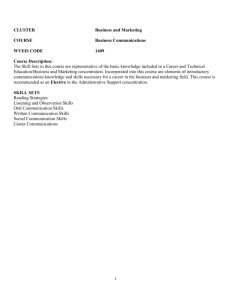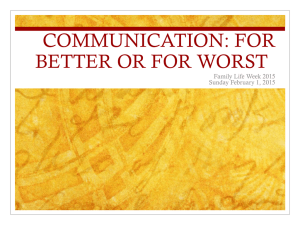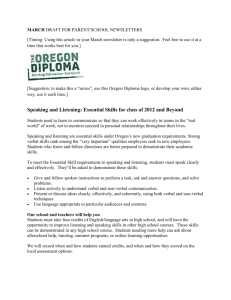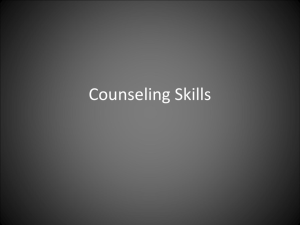AD 2009 communication (new window)
advertisement
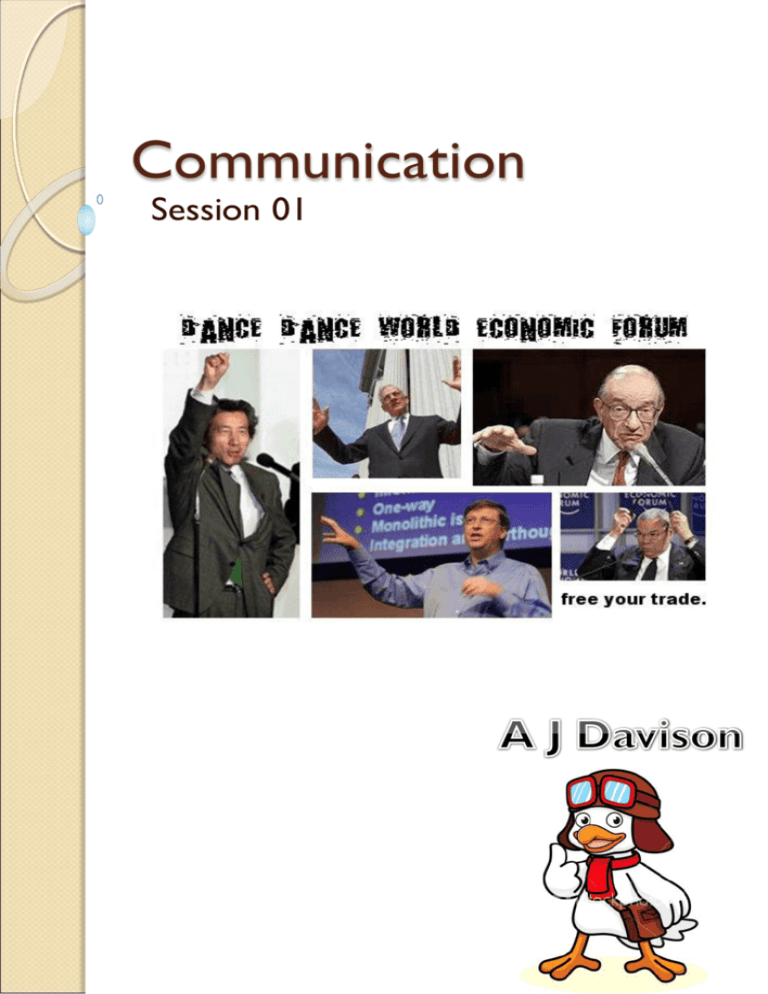
Communication Session 01 Lets Get Moving Learning objectives On completion of this chapter you should be able to: 1. define communication 2. describe different forms and types of communication 3. Describe models and approaches in communication 4. identify barriers to communication and methods to overcome the barriers 5. explain the importance of communication in today's learning environments. Communication Communication '[Communication is] the use of verbal and non-verbal communication between people trying to create shared meaning.' (Yoder, Hugenberg & Wallace 1996) 'Communication is any behaviour, verbal, nonverbal or graphic that is perceived by another.' (Dwyer 2005, p.4) 'The management of messages for the purpose of creating shared meaning.' (Frey, Botan, Friedman & Kreps 1991) 'The transmission and reception of information.' (Shannon & Weaver in Yoder, Hugenberg & Wallace 1996) Watzlawick, Beavan and Jackson (1967) Approached a definition of communication by proposing a series of axioms (principles or rules). 1. Axiom 1: One cannot not communicate. 2. Axiom 2: Human beings communicate both digitally and analogically. Verbal and nonverbal 3. Axiom 3: Communication has both a content and relationship component. what is said, how it is said. 4. Axiom 4: The nature of the relationship depends on how the parties punctuate the communication sequence. different start points, different perceptions of time, difficulty understanding where other is coming from. 5. Axiom 5: All communication is either symmetrical or complementary. Each has the same power; or Each has a different power base, boss and subordinate. Different relationships create different communication process e.g. Informal/ formal respective. Communication What types of communication do we use in everyday life? Types of Communication Communication Type Example verbal nonverbal Graphic and pictorial electronic listening reading Observing (one way) Remote (telephone) Where/why important Communication What forms of communication do we use in everyday life? Form of communication Example Form of communication Give Information Negotiate Ask questions Express emotions Control and manage reading Organise Remote Learn and teach Where/why important Listening We listen in order to learn and retain information. If we are speaking, we are not listening or learning anything to add to our sum of knowledge. This is why the first step to effective listening is to stop talking! Ken Fracaro Getting the meaning right Three Groups True Insurance Statements Actual Church Bulletins Student Bloopers How We Learn 83% through seeing 11% through hearing 3.5%through smell 1,5% through touch 1% through taste How We Retain information • • • • • • 10% of what we read 20% of what we hear 30% of what we see 50% of what we see and hear 70% of what we say as we talk 90% of what we say as we do a thing 1 3 2 4 Communication: Process theory transmission models The process models The transmission model was subsequently adapted to form the process models in which people transmit, receive, interpret and respond to messages with feedback (Dwyer 2005). The process models have seven main elements: Sender Message Receiver Feedback Channel Context or setting (environment) Noise or interference Four ways of communicating What we do How we look What we say How we say Facial Expression • • • • A smile is contagious, be a carrier Lear the language of the eyes Look people in the eye Wear success on your face Body Language Face others directly Good posture exudes good self esteem Develop a winning handshake Appearance • You never get a second chance to make a first impression • Clothing always communicates • over dressing is better than under dressing • Accept what you can’t change Listening Communication is not a monologue but a dialogue Listening is not passive –it’s active Remember to pause, look and respond Valuing others • • • • Develop genuine interest in others Remember people’s names Respond to messages quickly Make what matters to that person matter to you Barriers to communication. 1. 2. 3. 4. 5. 6. 7. Physical barriers Perceptual barriers Emotional barriers Cultural barriers Language barriers Gender barriers Interpersonal barriers There are six levels at which people can distance themselves from one another: 1. 2. 3. 4. 5. 6. Withdrawal Rituals Pastimes Working Games Closeness Creating a positive communication climate TASK Describe a situation in which you have a experienced a positive communication climate. Describe a situation in which you have experienced a negative communication climate. As a teacher, or manger, how would you ensure a positive communication climate in the learning environment? How realistic is the 'win-win' approach? Can we always satisfy the needs of both parties in a situation? Spider graph (chart) Mind Maps ACTIVITY In groups – look at Barriers to Communication Document Draw a mind map illustrating these forms of barriers within the teaching and learning environment The difference between sympathy and empathy Empathy Empathy – trying to understand the other person's point of view or, trying to put yourself in their shoes. difficult if we are unfamiliar with the person or if they are from a different culture. Open communication and careful listening to needs, desires, interests and motivations Try to understand their point of view and how it might influence or affect the situation. Communication (02) Please research Active listening for next week


